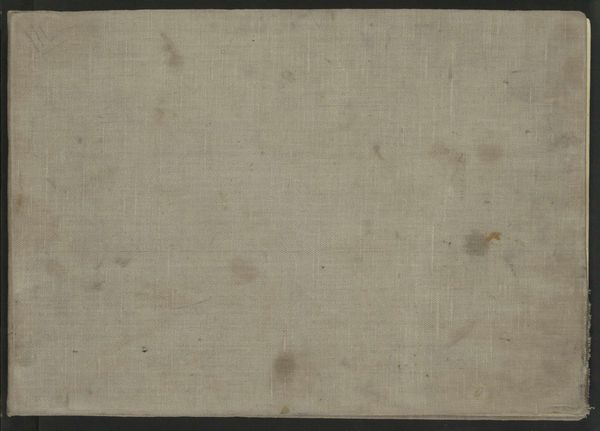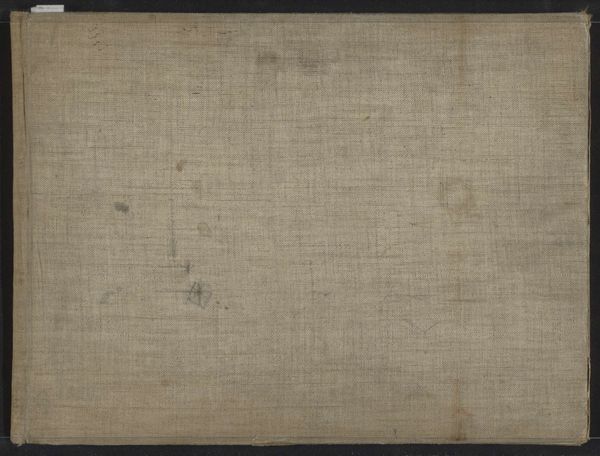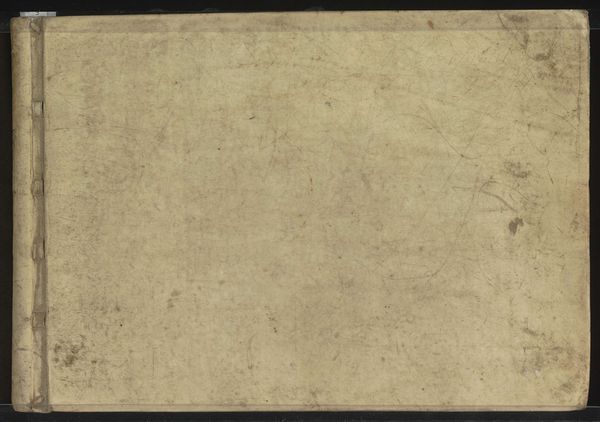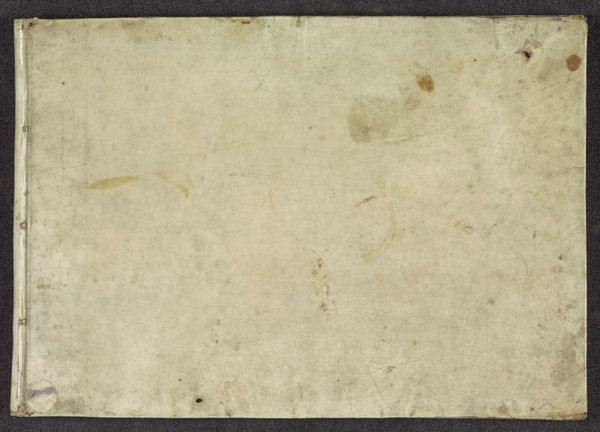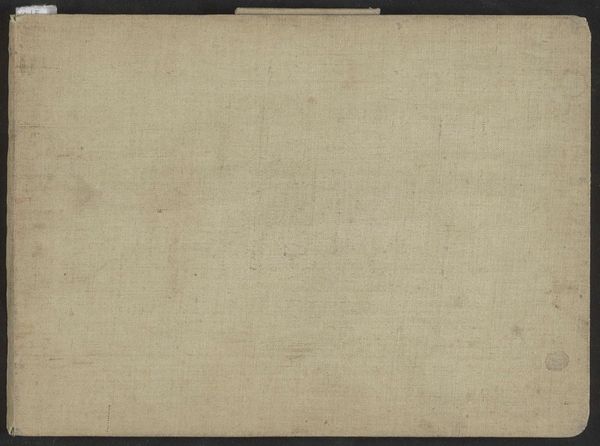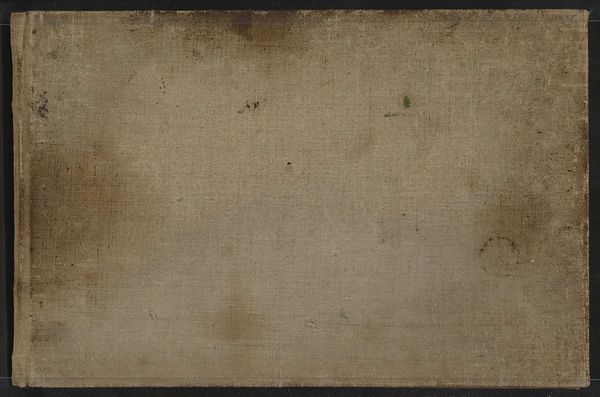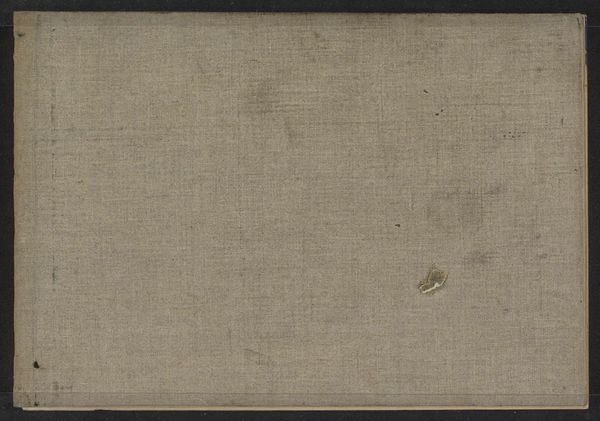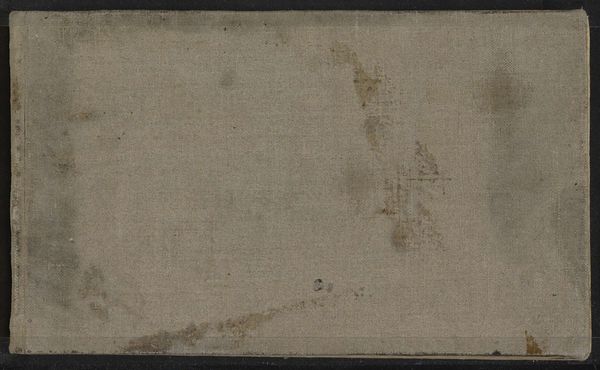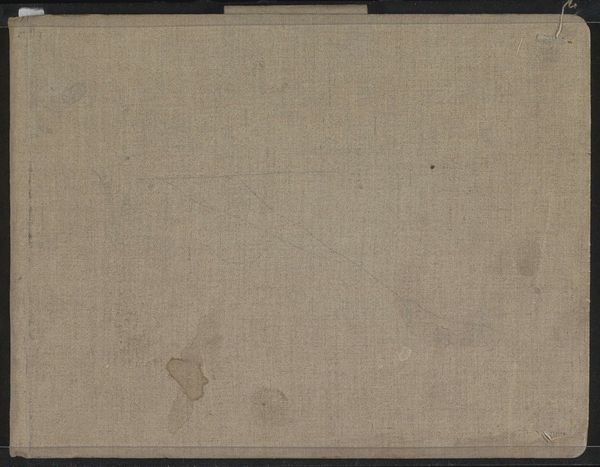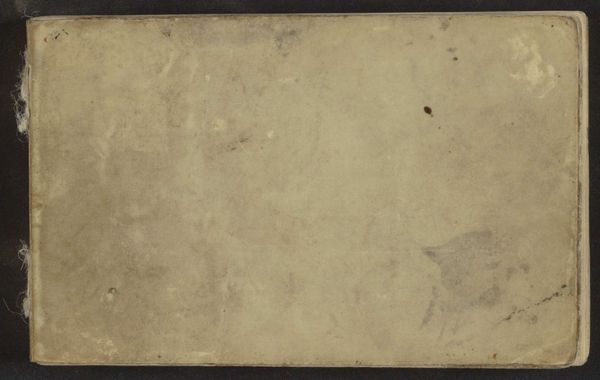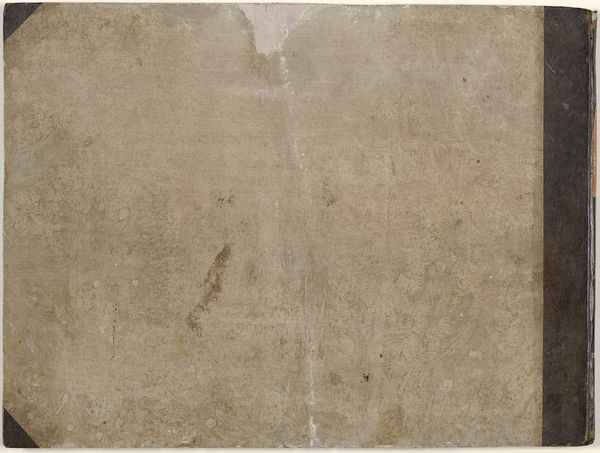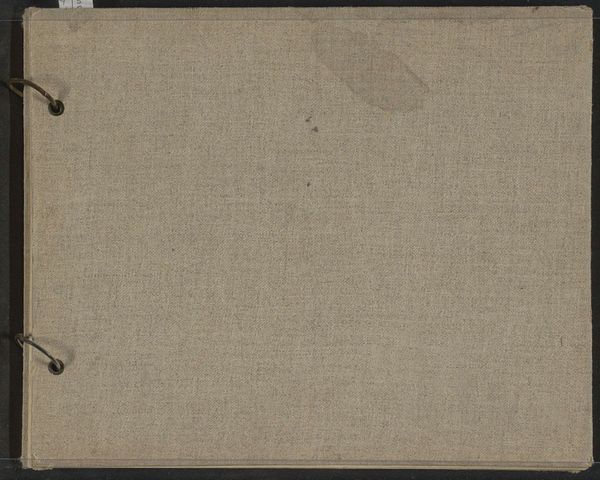
drawing, paper
#
drawing
#
paper
Dimensions: height 256 mm, width 342 mm, thickness 5 mm, width 682 mm
Copyright: Rijks Museum: Open Domain
Editor: Here we have George Hendrik Breitner's "Sketchbook with 9 Sheets," dating from 1886 to 1923. It's made with drawing on paper, and… well, frankly, it just looks like the cover of an old sketchbook. I find myself wondering, what makes this piece significant, if all we’re seeing is the aged exterior? Curator: Precisely. Let's consider the "means of production." A sketchbook is, in essence, a tool. Breitner, situated in a rapidly industrializing world, is reliant on commercially produced paper and binding. It begs the question, doesn’t it: how does the inherent value we assign to 'art' change when it’s intrinsically linked to mass production and standardized materials? What kind of labor do you imagine went into its creation? Editor: That’s an interesting perspective! It almost flattens the hierarchy between artist and manufacturer. But how does this square with Breitner's artistic intent? Is this simply about commercial availability, or something more deliberate? Curator: What appears at first glance like simple availability may signify a conscious choice. Breitner, rooted in depicting daily life, acknowledges and uses, rather than shuns, industrially fabricated goods. Its significance transcends availability. Think about paper quality and affordability at the time; how did those factors influence Breitner’s workflow and his style? What stories of artistic consumption can we infer from the wear and tear on this object? Editor: So, instead of seeing just a simple sketchbook, we should consider it a record of material conditions, of the artist's relationship to industry, and maybe even his working methods. Curator: Exactly. It is an unvarnished object which yields far more insight when viewed as part of a larger system. The marks of time on its cover narrate a social and historical trajectory—production, use, and eventual display in a museum, transforming a mere material into an object of contemplation. Editor: Fascinating. I’ll certainly look at sketchbooks differently from now on.
Comments
No comments
Be the first to comment and join the conversation on the ultimate creative platform.

